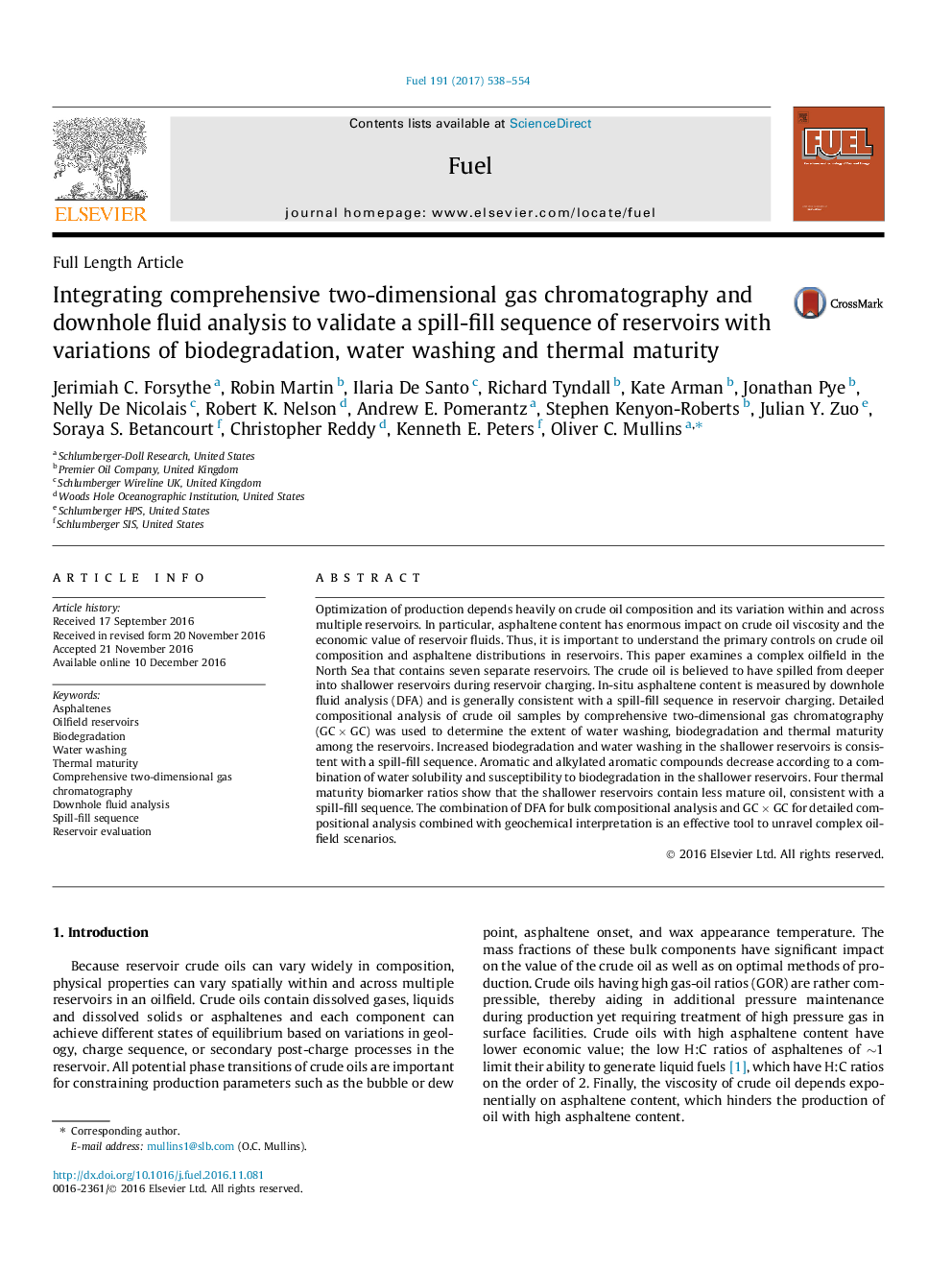| Article ID | Journal | Published Year | Pages | File Type |
|---|---|---|---|---|
| 4768797 | Fuel | 2017 | 17 Pages |
Abstract
Optimization of production depends heavily on crude oil composition and its variation within and across multiple reservoirs. In particular, asphaltene content has enormous impact on crude oil viscosity and the economic value of reservoir fluids. Thus, it is important to understand the primary controls on crude oil composition and asphaltene distributions in reservoirs. This paper examines a complex oilfield in the North Sea that contains seven separate reservoirs. The crude oil is believed to have spilled from deeper into shallower reservoirs during reservoir charging. In-situ asphaltene content is measured by downhole fluid analysis (DFA) and is generally consistent with a spill-fill sequence in reservoir charging. Detailed compositional analysis of crude oil samples by comprehensive two-dimensional gas chromatography (GCÂ ÃÂ GC) was used to determine the extent of water washing, biodegradation and thermal maturity among the reservoirs. Increased biodegradation and water washing in the shallower reservoirs is consistent with a spill-fill sequence. Aromatic and alkylated aromatic compounds decrease according to a combination of water solubility and susceptibility to biodegradation in the shallower reservoirs. Four thermal maturity biomarker ratios show that the shallower reservoirs contain less mature oil, consistent with a spill-fill sequence. The combination of DFA for bulk compositional analysis and GCÂ ÃÂ GC for detailed compositional analysis combined with geochemical interpretation is an effective tool to unravel complex oilfield scenarios.
Keywords
Related Topics
Physical Sciences and Engineering
Chemical Engineering
Chemical Engineering (General)
Authors
Jerimiah C. Forsythe, Robin Martin, Ilaria De Santo, Richard Tyndall, Kate Arman, Jonathan Pye, Nelly De Nicolais, Robert K. Nelson, Andrew E. Pomerantz, Stephen Kenyon-Roberts, Julian Y. Zuo, Soraya S. Betancourt, Christopher Reddy, Kenneth E. Peters,
